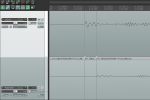CoolCat
Well-known member
I was time-travelling back to 2007 or so reading old slams on some equipment, back when people said USB sucks and Firewire is so much better time frame etc..etc..
It made me think about the slamming/slandering of interfaces sounding that bad, horrible, crap. or clear and perfect Is it true?
I cant recall all of my interfaces.
EMU1820m, Focusrite Saffire, Tascam 122, Tascam 1641, Line6UX2, Line6UX8, MOTU Ultramicrosomething...
I cant say theres a super huge difference in sound. Its not like the difference between some laptop speakers and active monitors, the interface and USB/Firewire and AD/DA therein never seemed to really jump out. All are 16/24 capable, 44.1 to 96k which I never really heard the difference of 44.1 to 96k much,
Anyone else want to list their past and present interfaces and give a short comparison in sound?
It made me think about the slamming/slandering of interfaces sounding that bad, horrible, crap. or clear and perfect Is it true?
I cant recall all of my interfaces.
EMU1820m, Focusrite Saffire, Tascam 122, Tascam 1641, Line6UX2, Line6UX8, MOTU Ultramicrosomething...
I cant say theres a super huge difference in sound. Its not like the difference between some laptop speakers and active monitors, the interface and USB/Firewire and AD/DA therein never seemed to really jump out. All are 16/24 capable, 44.1 to 96k which I never really heard the difference of 44.1 to 96k much,
Anyone else want to list their past and present interfaces and give a short comparison in sound?

 ...
...